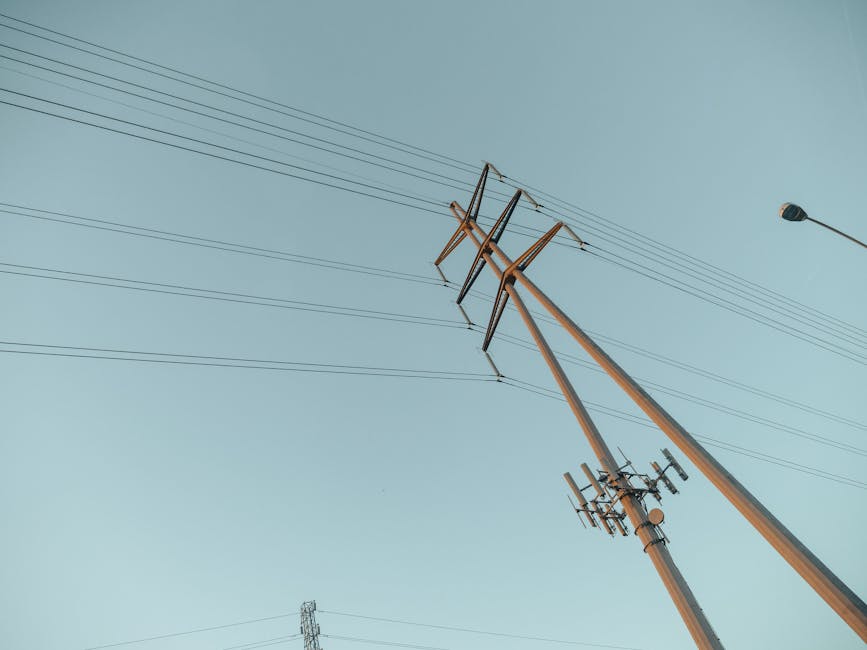How To Connect Generator To Solar Inverter
Connecting a generator to a solar inverter can be a great way to ensure you have a reliable power source, especially during emergencies or when solar energy is insufficient. This guide will walk you through the process step-by-step, making it easy to understand and implement. Whether you’re a seasoned DIY enthusiast or a beginner, you’ll find valuable insights here. Let’s dive in!
Understanding the Basics
Before we get into the nitty-gritty of connecting a generator to a solar inverter, it’s essential to understand some basic concepts.
What is a Solar Inverter?
A solar inverter is a device that converts the direct current (DC) electricity generated by solar panels into alternating current (AC) electricity, which is used by most household appliances. There are different types of solar inverters, including:
- String Inverters: Commonly used in residential systems, they connect multiple solar panels in a series.
- Microinverters: These are attached to individual solar panels, allowing for better performance in shaded conditions.
- Hybrid Inverters: These can manage both solar energy and battery storage, making them versatile for various setups.
What is a Generator?
A generator is a machine that converts mechanical energy into electrical energy. It can be powered by various fuels, including gasoline, diesel, or propane. Generators are often used as backup power sources during outages or in off-grid situations.
Why Connect a Generator to a Solar Inverter?
Connecting a generator to a solar inverter can provide several benefits:
- Backup Power: In case of low solar production, the generator can kick in to provide additional power.
- Extended Runtime: It allows you to use your solar system for longer periods without depleting your battery storage.
- Flexibility: You can use the generator when solar energy is insufficient, ensuring you always have power when you need it.
What You’ll Need
Before you start the connection process, gather the following materials:
- Solar inverter
- Generator
- Appropriate cables (usually heavy-duty extension cords or generator cables)
- Power distribution panel (if necessary)
- Safety gear (gloves, goggles)
- Multimeter (for testing connections)
Step-by-Step Guide to Connecting a Generator to a Solar Inverter
Step 1: Safety First
Before you begin, ensure you are wearing appropriate safety gear. Disconnect all power sources to avoid any electrical hazards. It’s crucial to work in a safe environment.
Step 2: Check Compatibility
Ensure that your generator and solar inverter are compatible. Check the inverter’s specifications to confirm it can handle the generator’s output. Look for:
- Voltage ratings (typically 120V or 240V)
- Wattage capacity
- Type of connection (some inverters have specific input requirements)
Step 3: Prepare the Generator
Set up your generator in a well-ventilated area, away from flammable materials. Ensure it’s on a stable surface and that all connections are secure. Fill it with the appropriate fuel and check the oil levels.
Step 4: Connect the Generator to the Inverter
Now it’s time to make the connection. Follow these steps:
- Locate the Input Terminals: Find the AC input terminals on your solar inverter.
- Use Appropriate Cables: Connect the generator’s output to the inverter’s input using heavy-duty cables. Ensure the connections are tight and secure.
- Check Polarity: Make sure that the positive and negative terminals are correctly connected to avoid damage.
Step 5: Power Up
Once everything is connected, start your generator. Allow it to warm up for a few minutes before turning on the inverter. Monitor the inverter’s display for any error messages or warnings.
Step 6: Testing the Connection
Use a multimeter to test the output from the inverter. Ensure that the voltage and wattage are within the expected range. This step is crucial to confirm that everything is functioning correctly.
Tips for Efficient Operation
To ensure your generator and solar inverter work efficiently together, consider the following tips:
- Regular Maintenance: Keep both the generator and inverter well-maintained to prevent issues.
- Monitor Usage: Keep an eye on your power consumption to avoid overloading the inverter.
- Fuel Management: Ensure you have enough fuel for the generator, especially during extended outages.
Common Issues and Troubleshooting
Even with proper setup, you may encounter some issues. Here are common problems and their solutions:
- Inverter Not Turning On: Check the connections and ensure the generator is running properly.
- Low Power Output: Verify that the generator is not overloaded and that the inverter settings are correct.
- Overheating: Ensure there is adequate ventilation around the inverter and generator.
Conclusion
Connecting a generator to a solar inverter can significantly enhance your power supply, providing you with flexibility and reliability. By following the steps outlined in this guide, you can ensure a safe and effective connection. Remember to prioritize safety and compatibility, and you’ll be well on your way to enjoying uninterrupted power, whether from the sun or your generator!
FAQs
Can I connect any generator to my solar inverter?
No, it’s essential to check the compatibility of your generator with the solar inverter. Ensure that the voltage and wattage ratings match.
How do I know if my inverter is overloaded?
If your inverter displays an error message or shuts down unexpectedly, it may be overloaded. Check your power consumption and reduce the load if necessary.
Is it safe to run a generator indoors?
No, running a generator indoors




